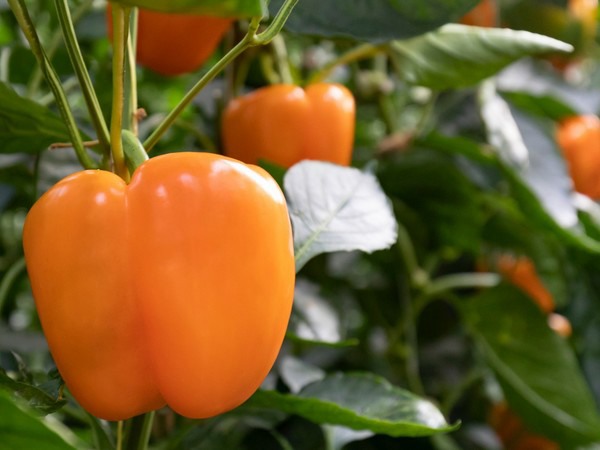The new orange pepper variety called Jack Miller RZ was produced very successfully at one company (6 hectares) in 2019, and in 2020 it is being grown on over 50 hectares throughout the Netherlands and Belgium. Jack Miller has also made a good impression in Canada, where it is being produced on a larger scale from now on.

Plant raising
Jack Miller can have a slightly slender plant model in the nursery phase, in which case it can be steered for growth. But don’t steer it too strongly in temperature (in low-light conditions), otherwise the top will become too thin. If primed seeds are supplied, Jack Miller has a normal number of growth days during raising.
Start of production
The Jack Miller plant can sometimes still seem a little skinny at the start. This isn’t a problem, in view of the fact that it can still be very dark in Canada at this time of year. It produces its first fruit set easily, partly because Jack Miller doesn’t waste too many assimilates on unnecessary leaf mass.
Therefore, it’s fine to steer for growth in the first few weeks after planting. It is important to put down strong foundations first, with good roots, before ramping up production, so there’s no rush to start working with a day/night temperature difference. In low-light conditions it’s fine to reduce the 24-hour temperature, once the plant has rooted well. Rijk Zwaan advises 18 °C as the lower limit to maintain sufficient speed.
First setting
Jack Miller sets easily, so a really low pre-midnight is not necessary to force the setting. The breeder's preference is the first fruit in the 4th axil. That’s early enough, in view of the fact that Jack Miller is quick to ripen and develop colour. This also builds up more root capacity, because in order to truly do the plant justice it’s important not to overburden it. Pre-midnights of 16-17 °C are fine in dark conditions, but it is best not to go any lower due to overly large flowers and slowness.
Into spring
The plant will now gradually find the right production balance. Jack Miller’s flowers can seem a little weak, but the plant’s fruit setting remains regular. This results in a very stable production pattern and a nicely stable average fruit weight.
In this period, the strategy continues to be focused on maintaining growth and even stimulating it a little where possible. Jack Miller is definitely an interesting variety for working with a diffuse coating or diffused glass. It is not particularly susceptible to blossom end rot, but protection from above can help to keep the temperature a little lower around the top. This places less stress on the plant and keeps the top growth going, especially in the upper foliage.
Summer
Jack Miller is an easy-to-manage variety and it requires little special treatment, even in the summer. Because it is an open plant with steady top growth, you can continue to create a growth climate in this period too. By the way, the openness also makes harvesting very easy, not least because the fruits don’t grow too closely to one another - so that definitely has a positive impact on the harvesting averages.
The outdoor climate has become more extreme in recent years - from long heatwaves to brief but intense tropical periods that present crops with substantial transitions. Jack Miller has shown that it can cope with these conditions reasonably well in terms of both the plant itself and fruit quality. For example, Jack Miller is not susceptible to pitting and, as mentioned above, it is fairly strong against blossom end rot.
You can start pinching at 1 again halfway through the summer, sometime in August. Allow the plant to become a little more open again then, since the rising humidity in the outdoor climate is starting to promote more growth. This also helps to sustain the fruit weight. Afterwards, as we move into the autumn and amount of light decreases, the fruit load should not be too high.
In summary
Jack Miller can be summed up as an easy-to-grow variety without any significant special requirements. The strategy should be to steer for achieving and maintaining growth in the first part of the season. This ensures that the plant remains balanced, which will lead to regular production. A healthily balanced crop also helps to keep labour down, in terms of both harvesting and pinching.
For more information: RZH Canada Ltd.
RZH Canada Ltd.
932 Mersea Rd 7
Leamington | ON N8H 3V8
Canada
+1 519 324 0632
rzca@mnsi.net
www.rijkzwaan.com
